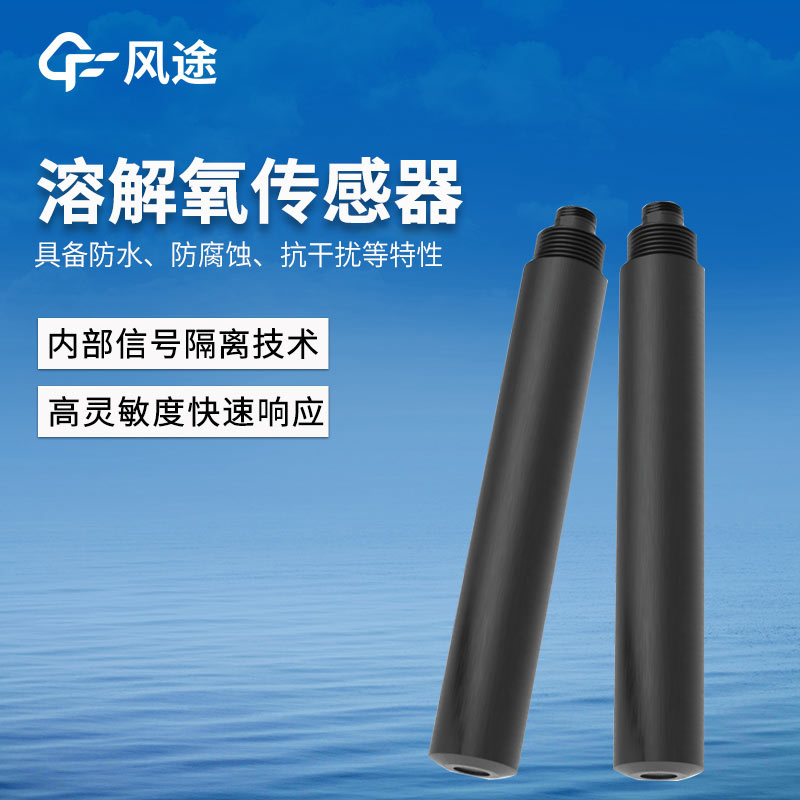Shandong Fengtu IOT Technology Co., Ltd
Sales Manager:Ms. Emily Wang
Cel,Whatsapp,Wechat:+86 15898932201
Email:info@fengtutec.com
Add:No. 155 Optoelectronic Industry Accelerator, Gaoxin District, Weifang, Shandong, China

Sales Manager:Ms. Emily Wang
Cel,Whatsapp,Wechat:+86 15898932201
Email:info@fengtutec.com
Add:No. 155 Optoelectronic Industry Accelerator, Gaoxin District, Weifang, Shandong, China
time:2025-05-07 09:35:17 source:Weather Station viewed:11 time
Dissolved oxygen refers to the molecular oxygen dissolved in water, expressed as the number of milligrams of oxygen per liter of water (mg/L). It is an important indicator for measuring the self-purification capacity of water bodies and is crucial for the survival of aquatic organisms, the balance of aquatic ecosystems, and water quality monitoring.
The traditional methods for measuring dissolved oxygen mainly include the iodometric method and the amperometric method. The iodometric method is based on redox reactions and determines the dissolved oxygen content through chemical titration. However, it has a cumbersome operation, takes a long time, and is easily interfered with. The amperometric method uses the linear relationship between the current generated by the electrode and the dissolved oxygen concentration for measurement. It has a fast response speed, but the electrode requires regular maintenance and calibration and is easily affected by chemical substances in the water.
The fluorescence method is a new type of dissolved oxygen measurement technology. Its principle is based on the fact that fluorescent substances will emit fluorescence after being excited by light of a specific wavelength, and dissolved oxygen will quench the fluorescence signal of the fluorescent substances. By measuring the decay time or intensity change of the fluorescence signal, the concentration of dissolved oxygen in the water can be determined. This method does not consume oxygen, does not interfere with the water sample, has high measurement accuracy, a fast response speed, and is not affected by chemical substances in the water.
The Dissolved oxygen sensor is designed based on the above principles. The sensor has a built-in fluorescent substance. When the sensor is immersed in water, the excitation light source emits light of a specific wavelength to irradiate the fluorescent substance, and the fluorescent substance is excited to generate fluorescence. The dissolved oxygen in the water will interact with the fluorescent substance, causing the fluorescence signal to weaken. The sensor detects the change in the fluorescence signal, converts it into an electrical signal, and after signal processing and calculation, finally obtains the concentration of dissolved oxygen in the water. Compared with traditional sensors, the Dissolved oxygen sensor has the advantages of being maintenance-free, having a long lifespan, high accuracy, and a fast response. It is widely used in fields such as environmental monitoring, sewage treatment, and aquaculture, providing reliable data support for water quality monitoring and management.

Among radar rain gauges, the YL4 Radar Rain Gauge utilizes an advanced small flat panel radar module and 24 GHz Doppler radar wave technology to measure the rate of droplet descent during the rainfall process and to differentiate the type and intensity of rain, snow, and hail based on droplet size a...
environmental parameters of sensors are used to monitor the atmospheric environment, which can detect temperature, humidity, pressure, light, rainfall, wind speed, wind direction, noise, PM2.5 and other environmental parameters....
rainfall detection is a device designed to detect the presence and intensity of rainfall, which can detect changes in rainfall in real time, regardless of sunlight, dust, leaves, etc....
Fengtu Technology has 4 water level monitoring stations, the models are: FT-SW1, FT-SW2, FT-SW3, FT-SW4. For details, please contact the customer service of this website.Fengtu Hydrological Monitoring Station adopts radar technology to measure hydrological data by non-contact method, with low power...